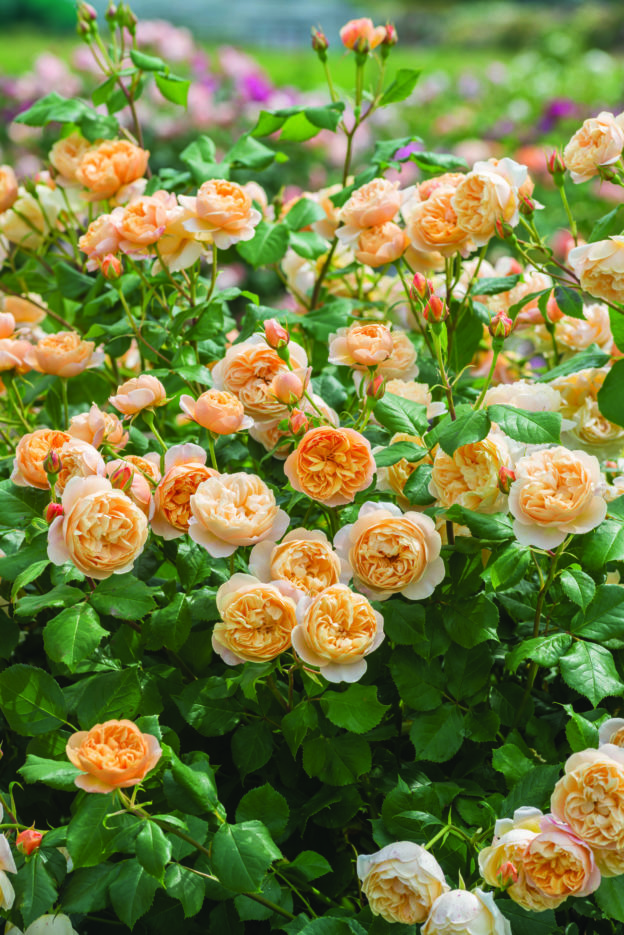Rose care in June
The flower of the month

Olivia Rose Austin
Roses take centre stage in June; they are even the birth month flower. We have an enormous selection of beautifully flowering roses in our garden centre.
June is the prime time to sort out your roses to ensure your rose display looks tip top this summer!
A Care Guide
Here are a few crucial steps to take towards healthy and flourishing roses;
- – Watch out for black spot if you see that your roses have black spots then prune out the affected areas and be sure to burn them rather than putting them into the compost. However, be warned that this may not solve the problem, as it the fungi can be spread by the wind etc. If the black spot is persistent then you may need a fungicide. Ask in store for the best way to use these.
Black spot is; a fungal disease that infects the leaves of rose plants. It can be identified by signature ‘black spots’ on the leaves. Sadly black spot is more prevalent in areas with good air quality so it is one of the downsides of growing roses in Devon.
- – Look out for aphids. The solution for these pests depends on the size of the population. If it seems to be a small population then simply squishing the aphids will suffice. However if you appear to have a lot then you will need to spray. Be cautious not to spray onto the flowers and always read directions on the back of the packet. An alternative is to wash aphids of the plant with a soapy water solution.
- – Dead head rose plants with large or clustered flowers that have finished flowering and will flower again. This is great as it encourages a second growth of flowers in July and August. The best way to deadhead roses is to pinch the head off just below the flower, this speeds up re-growth of flowers! – Don’t deadhead roses if you want to have their fruits – otherwise known as ‘hips’. This also applies to roses with only one flush of roses; there is no need to deadhead them as the hips will be attractive in your garden in winter.
- – Get rid of gallicas or any other suckers. To do this, simply snip the sucker shoot off at the main stem.
- – Feed roses with potassium rich foods such as tomato feed- we recommend Tomorite. Another great idea is using banana skins- simply lay them around the plant and cover with soil.
- – Try under planting your roses to hide bare stems and create an attractive backdrop. A really great plant to use is lavender to add an aromatic and colourful element.
- – Consider adding in a new growth of climbers or ramblers side on to promote more flowering on side shoots.
- – Water your roses regularly. As long as you have well draining soil then there is a minimal risk of overwatering.
- – Wash down roses at least a couple of times a week to avoid spider mites.
Visit our garden centre for all your roses, rose feed and treatments.








